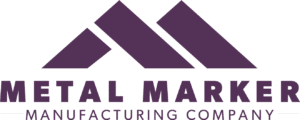Effective maintenance management depends on a number of factors, such as having an efficient workforce, appropriate systems, and availability of required resources for executing maintenance tasks.
There are two major ways in which asset tags can be used in maintenance management: to speed up workflow through information management and to help with asset inventory management.
Asset information management
Modern asset tags are no longer just a series of numbers. Most use barcodes, and when used with barcode scanners (these days a camera on your smartphone will due) and paired with a CMMS system that supports it, maintenance workers can get instant access to all important asset information.
Here’s how that works in practice.
Every modern CMMS software should have a centralized asset database. Ideally, when you open an asset, you should be able to see its general information, OEM manuals, and complete maintenance history (logs, reports, notes), all in one place. This is extremely helpful to technicians as they can use this information to speed-up troubleshooting and fault diagnosing, as well as the repair and maintenance process.
Asset tags play a crucial role in enabling this workflow. Instead of navigating through the software and wasting time searching for the right asset in the database, technicians can use their mobile devices to scan the asset tag, and the software can immediately open information for that particular asset.
In addition to that, scanning the asset tag has another important component. It ensures that the technician is performing maintenance on the right equipment. When you have multiple assets of the same type and model, technicians can again scan the asset tag and double-check if the ID of the asset is matching the ID of the asset on the Work Order.
Asset inventory management
One of the primary uses of asset tags in maintenance is for managing asset inventory. Asset tags, barcode scanners, and inventory tracking software can be combined to let technicians know the location of every piece of equipment and who is currently in possession of the item. Asset tags can be used to implement efficient procedures for taking the tools out of storage and returning them back.
This is very helpful for organizations with a large maintenance team sharing the same tools but working across different locations. These procedures can be implemented for most of the tools, equipment, and spare parts used for completing maintenance tasks.
By using asset tags, the maintenance department has an easier time monitoring inventory levels, knowing the current value of their inventory, running an efficient automatic reordering system, and reducing the costs associated with loss and theft of tools and parts.
Wrap-up
Assets tags play a small but very important role in maintenance management. When paired with the right software solutions, they can help maintenance teams streamline their workflow and reduce inventory costs.
Bryan Christiansen is the founder and CEO of Limble CMMS. Limble is a modern, easy to use mobile CMMS software that takes the stress and chaos out of maintenance by helping managers organize, automate, and streamline their maintenance operations.
